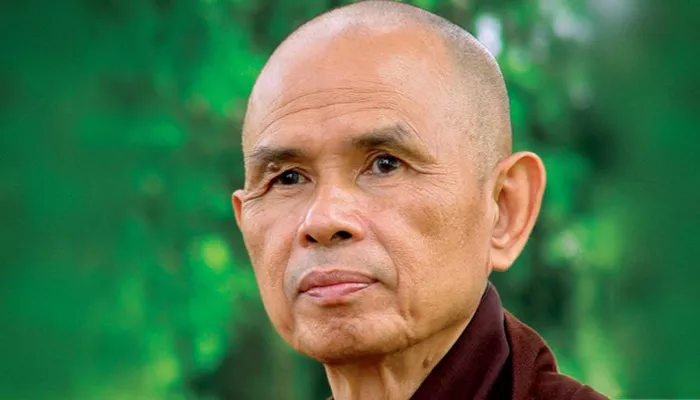Thich Nhat Hanh was a Vietnamese Buddhist monk, teacher, author, and peace activist. He was born in 1926 and passed away in 2022. He is known worldwide for his simple and practical teachings on mindfulness and peace.
Thich Nhat Hanh’s teachings helped people from all backgrounds understand how to live more peacefully. He brought Buddhist ideas into everyday life, making them easy to practice.
Early Life and Monastic Training
Thich Nhat Hanh became a monk at a young age. He studied deeply in the Buddhist tradition of Vietnam. Later, he worked as a teacher and helped during the Vietnam War by promoting peace.
His early experience of war and suffering shaped his commitment to non-violence and mindfulness.
Core Teachings of Thich Nhat Hanh
Mindfulness in Daily Life
One of Thich Nhat Hanh’s main teachings is mindfulness. Mindfulness means paying full attention to the present moment without judgment.
He taught that mindfulness can be practiced while doing simple activities like walking, breathing, eating, or washing dishes. This practice helps calm the mind and reduce stress.
Interbeing: The Connectedness of All Things
Thich Nhat Hanh introduced the concept of interbeing. This means that everything in the universe is connected and depends on everything else to exist.
He explained that no one and nothing exists alone. Understanding interbeing helps us feel compassion and respect for others and nature.
Peace and Nonviolence
Thich Nhat Hanh was a strong advocate for peace. He believed that peace starts within each person through mindfulness and understanding.
He worked hard to promote peace during the Vietnam War and later around the world. He taught that nonviolence is the way to end suffering and conflict.
The Practice of Deep Listening and Loving Speech
He emphasized deep listening and loving speech as tools to heal relationships. Deep listening means listening with full attention and compassion.
Loving speech means speaking kindly and truthfully to reduce suffering and bring understanding.
Walking Meditation and Breathing
Thich Nhat Hanh taught special forms of meditation that are easy to practice anywhere. Walking meditation involves walking slowly and mindfully, feeling each step.
Mindful breathing focuses on the breath as a way to calm the mind and stay present.
Books and Writings
Popular Works
Thich Nhat Hanh wrote over 100 books. Some of the most famous are:
- “The Miracle of Mindfulness” – A guide to practicing mindfulness every day.
- “Peace Is Every Step” – How to find peace in daily life.
- “No Death, No Fear” – Teachings on understanding life and death.
- “The Heart of the Buddha’s Teaching” – Explains core Buddhist ideas clearly.
Writing Style
His writing is simple and clear. He used stories and examples from daily life to explain deep Buddhist ideas. This made his teachings easy to understand for people everywhere.
Legacy and Global Impact
Establishing Plum Village
Thich Nhat Hanh founded the Plum Village monastery in France. It is a place where people learn and practice mindfulness and peace together.
Plum Village welcomes thousands of visitors each year from all over the world. It is a center for mindfulness retreats and training.
Influence on Mindfulness Movement
His teachings played a big role in spreading mindfulness worldwide. Many therapists, doctors, and educators use his methods to help people with stress, anxiety, and depression.
Mindfulness is now part of many health and wellness programs thanks to his work.
Engaged Buddhism
Thich Nhat Hanh is known as a pioneer of Engaged Buddhism. This means applying Buddhist teachings to solve social and political problems.
He taught that compassion should lead to action for justice, peace, and the environment.
Global Peace Activism
He was nominated for the Nobel Peace Prize by Dr. Martin Luther King Jr. for his efforts to end the Vietnam War peacefully.
Thich Nhat Hanh inspired many peace movements worldwide. His message of peace and mindfulness continues to influence leaders and activists.
Practice and Teachings in Daily Life
How to Practice Mindfulness Following Thich Nhat Hanh
Here are some simple steps to practice mindfulness inspired by Thich Nhat Hanh:
- Focus on your breath to calm your mind.
- Pay attention fully to what you are doing, whether it is eating, walking, or listening.
- Recognize your feelings without judgment.
- Practice deep listening when talking with others.
- Speak kindly and truthfully.
Benefits of His Teachings
Practicing his teachings can bring:
- More peace and happiness.
- Better understanding of yourself and others.
- Reduced stress and anxiety.
- Stronger relationships.
- Greater compassion and kindness.
Conclusion
In a fast and often stressful world, Thich Nhat Hanh’s teachings remind us to slow down and live fully in the present moment. His simple yet deep messages guide us toward peace, compassion, and true happiness.
His legacy continues through the many people and communities around the world who practice mindfulness and peace inspired by his life and work.

